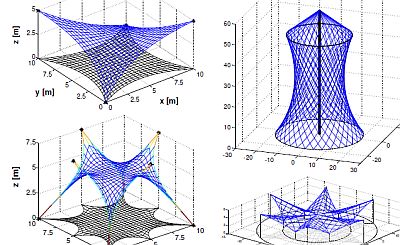
Structural Optimization of Cable Systems
Quagliaroli Manuel - Politecnico di Milano (Italy)

PRESENTATION
Abstract
Cable systems differ from conventional structures for their lightness and versatility of shapes. Being able to operate only through axial forces, stress state and structural form are closely related. It follows that the geometric configuration must be determined by specific techniques that provide both the form and the associated stress state. This process is called form finding. Without external loads, for a satisfactory geometry, there are infinitely sets of pretension forces which could lead the same balanced configuration. The different sets have however different structural stiffness, which depends on the adopted prestress levels. For practical purposes, the only form finding phase is therefore not sufficient, but the introduction of additional design criteria, such as structural performance in terms of rigidity and deformability, are needed. This leads to introduce new variables, like the stress intensity and the actual section of the cables that, in addition, must match those of commercial profiles. In this work, a method for the definition of the optimal configuration of structural cable systems is presented. This goal is achieved by a genetic algorithm specialized to optimal design of cable structures.
